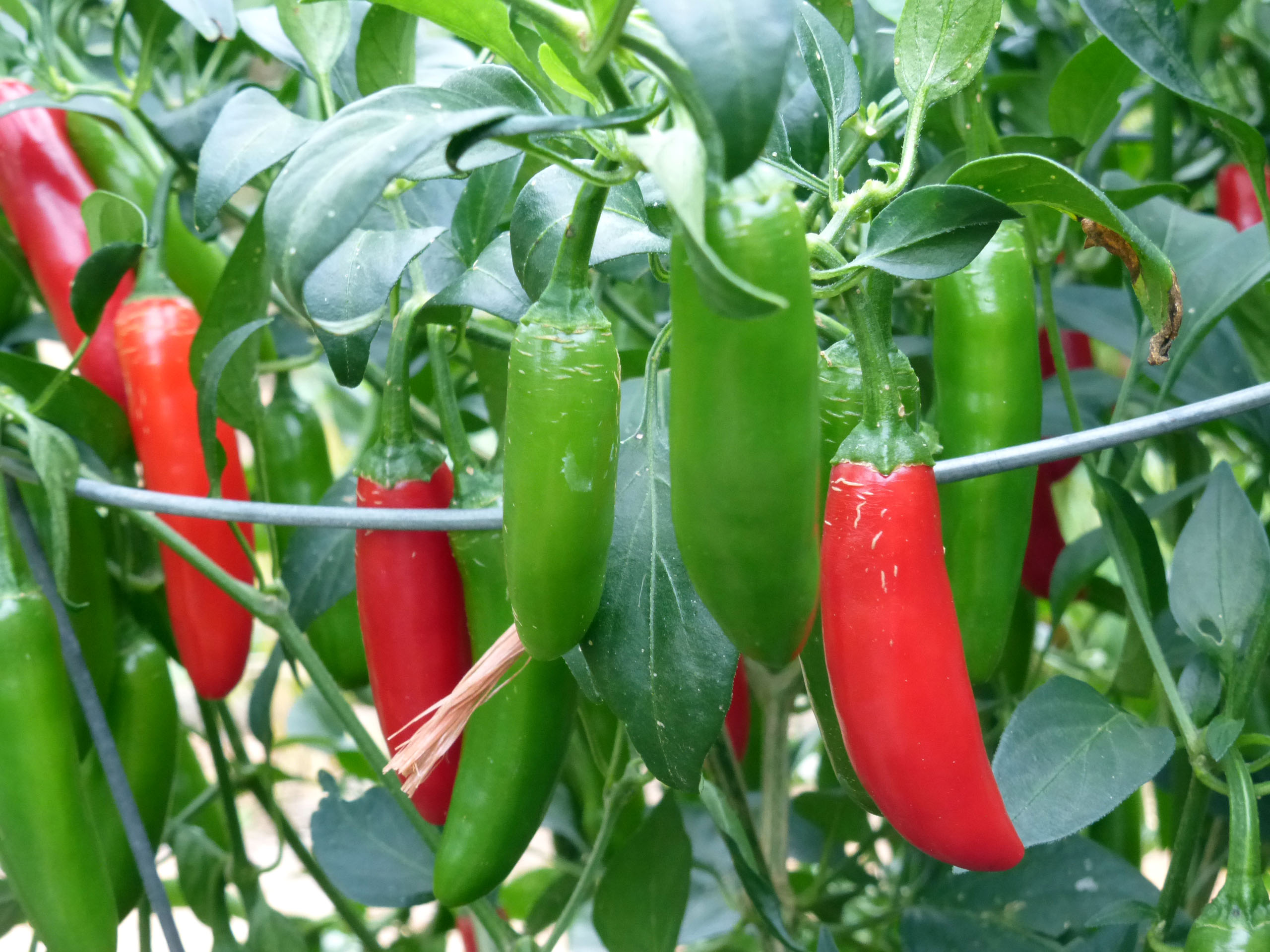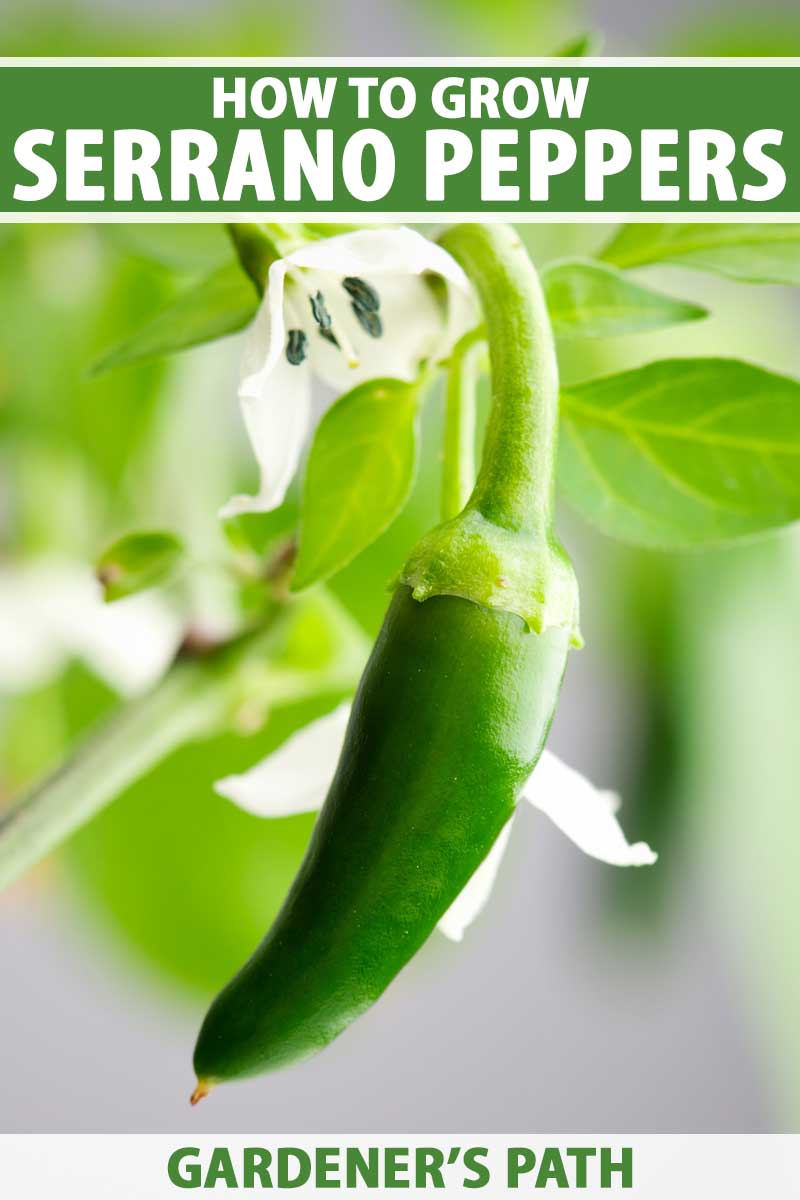To grow Serrano peppers, start seeds indoors 8-10 weeks before the last frost. Transplant them outdoors in warm, well-drained soil with full sunlight.
Serrano peppers are a popular choice for home gardens, thanks to their vibrant flavor and moderate heat. These peppers thrive in warm climates and can be grown in pots or directly in the ground. With proper care, you can enjoy a bountiful harvest.
Growing Serrano peppers requires attention to soil, sunlight, and watering needs. They typically reach maturity in about 70-80 days. Whether you plan to use them fresh, dried, or in salsas, understanding their growth requirements is essential. This guide will help you cultivate these flavorful peppers successfully.

Credit: smallaxepeppers.com
How to Grow Serrano Peppers : Step by Step Guide
Introduction To Serrano Peppers
Serrano peppers have a rich history. They originated in the mountainous regions of Mexico. Their popularity has spread worldwide due to their unique flavor.
These peppers are commonly used in various dishes. They add a spicy kick to salsas, sauces, and soups. Cooked or fresh, they enhance meals with their vibrant taste.
On the heat scale, serrano peppers rank between 2,500 to 5,000 Scoville heat units. This heat level offers a nice balance for many recipes. They are spicier than jalapeños but milder than habaneros.
Selecting The Right Seeds
Choosing the right seed varieties is important for growing Serrano peppers. Look for seeds that are heirloom or organic. These types often offer better flavor and more resilience.
Popular seed varieties include:
- Serrano Tampiqueño – Known for its spicy taste.
- Serrano del Sol – A great choice for hot climates.
- Serrano Chile – This variety is flavorful and versatile.
Seeds can be purchased from various places. Local garden centers often stock them. Online retailers also provide a wide selection. Look for reputable sellers to ensure quality.
Essential Supplies For Growing Serrano Peppers
Growing Serrano peppers requires specific soil and containers. Use well-draining soil that retains moisture. A mix of potting soil and compost works well.
pH levels should be between 6.0 and 6.8 for optimal growth. Test the soil before planting. This ensures the best environment for your peppers.
For containers, choose pots with drainage holes. A size of at least 5 gallons is ideal. This allows roots to grow freely.
Essential gardening tools include a trowel, pruning shears, and a watering can. These tools help maintain healthy plants. Keep them handy for easy access.

Credit: www.youtube.com
Starting Serrano Peppers Indoors
To start growing Serrano peppers indoors, begin with germinating seeds. Use a seed tray filled with moist potting soil. Plant seeds about half an inch deep. Keep the soil warm and damp. A temperature of around 70-80°F is ideal for germination.
For lighting, place the seed tray near a south-facing window. If natural light is low, use grow lights. Lights should be on for 12-16 hours a day. This helps seedlings grow strong and healthy.
Monitor the temperature closely. If it gets too cold, seeds may not sprout. Keep an eye on moisture levels. Overwatering can cause root rot.
Transplanting Seedlings Outdoors
Transplant seedlings outdoors after the last frost. This timing helps avoid cold damage. Wait until nighttime temperatures are above 50°F.
To prepare seedlings, start a hardening-off period. Gradually expose them to outdoor conditions. Start with a few hours in the shade.
Each day, increase their sunlight exposure. This process helps plants adjust to their new environment. After a week, they should be ready for transplanting.
Caring For Serrano Pepper Plants
Watering Serrano pepper plants is crucial for their growth. Keep the soil moist, but not soggy. Water deeply, allowing the topsoil to dry out between waterings.
For the fertilizing schedule, use a balanced fertilizer. Apply it every 4-6 weeks. This helps the plants grow strong and produce more peppers.
Pruning helps keep plants healthy. Remove any dead or yellow leaves. Support the plants with stakes if they grow tall. This prevents breaking from strong winds.
Pest And Disease Management
Serrano peppers face several common threats. These include aphids, spider mites, and whiteflies. Fungal diseases like powdery mildew can also harm plants. Early detection helps manage these issues effectively.
Organic control methods are a great choice for managing pests. Use insecticidal soap to kill soft-bodied insects. Neem oil can help control a variety of pests and fungi. Companion planting with marigolds can deter harmful insects. Regularly inspect plants for signs of trouble.
| Pest/Disease | Control Method |
|---|---|
| Aphids | Insecticidal soap |
| Spider Mites | Neem oil |
| Powdery Mildew | Fungicides |
| Whiteflies | Sticky traps |

Credit: gardenerspath.com
Harvesting And Storing Serrano Peppers
To know when to harvest Serrano peppers, look for color changes. Ripe peppers turn dark green or red. They should feel firm to the touch. A glossy skin indicates ripeness.
Use sharp scissors or shears for harvesting. Cut the stem about an inch above the pepper. This prevents damage to the plant. Always wear gloves to avoid irritation.
Store peppers in a cool, dry place. A refrigerator is ideal for longer storage. Keep them in a paper bag to reduce moisture. Avoid plastic bags as they trap humidity.
| Storage Method | Duration |
|---|---|
| Room Temperature | 1 week |
| Refrigerator | 2-3 weeks |
| Freezer | 6-8 months |
Troubleshooting Common Issues
Nutrient deficiencies can affect the growth of Serrano peppers. Common signs include yellowing leaves and stunted growth. A lack of nitrogen leads to pale leaves. Phosphorus deficiency causes poor root development. Potassium deficiency results in weak plants and browning leaf edges.
Overwatering symptoms include wilting and yellowing leaves. The roots may rot, stopping water absorption. Check the soil moisture before watering. Always ensure proper drainage to prevent standing water. Adjust the watering schedule based on weather conditions.
Enjoying Your Homegrown Serrano Peppers
Enjoying your homegrown Serrano peppers can be fun and rewarding. These peppers add a spicy kick to many dishes. Preservation methods help keep your peppers fresh for longer. You can freeze them or dry them. Freezing is simple; just wash, chop, and place them in bags. Dried peppers can be stored in jars. This method brings out their flavor.
Many recipe ideas await your delicious peppers. Try making salsa for a fresh dip. Stuffed Serrano peppers with cheese make a tasty snack. Spice up your favorite stir-fry dishes with sliced peppers. Adding them to tacos can elevate your meal. Enjoy experimenting with your homegrown harvest!
Frequently Asked Questions
How Long Does It Take For Serrano Peppers To Grow?
Serrano peppers typically take about 70 to 80 days to mature after planting. The time can vary based on conditions like temperature and sunlight. Ensure consistent watering and adequate nutrients for optimal growth. Harvest them when they turn from green to red for a sweeter flavor.
What Soil Is Best For Serrano Peppers?
Serrano peppers thrive in well-drained, loamy soil rich in organic matter. A pH level between 6. 0 and 6. 8 is ideal. Adding compost can enhance soil fertility. Good drainage prevents root rot while retaining moisture. Test your soil before planting to ensure optimal conditions.
How Often Should I Water Serrano Peppers?
Water Serrano peppers regularly, about once a week. Adjust based on rainfall and temperature. Ensure the soil remains consistently moist but not waterlogged. Overwatering can lead to root rot, while underwatering may stunt growth. Mulching helps retain soil moisture effectively.
When Should I Harvest Serrano Peppers?
Harvest Serrano peppers when they reach about 2 to 4 inches in length. They can be picked while still green or allowed to ripen to red. Red peppers tend to be sweeter and spicier. Regular harvesting encourages more fruit production throughout the growing season.
Conclusion
Growing Serrano peppers can be a rewarding experience. With proper care and attention, you’ll enjoy a bountiful harvest. Remember to choose the right soil, provide adequate sunlight, and water consistently. Your efforts will pay off with delicious, spicy peppers for your culinary creations.
Happy gardening!

